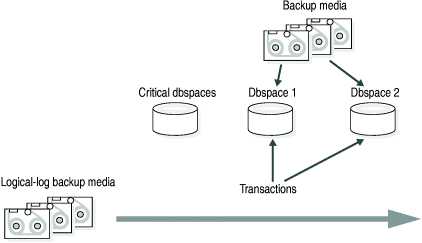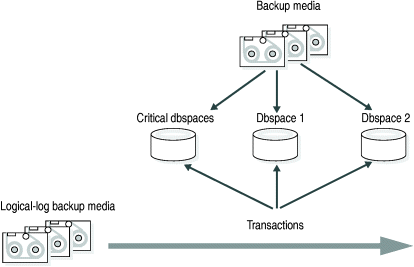Warm, cold, and mixed restores
When you restore data, you must decide whether to do so while the database server is in quiescent, online, or offline mode. The type of restore depends on which of these operating modes the server is in.
- If you restore noncritical dbspaces while the database server is online or quiescent, that process is called a warm restore.
- When HCL OneDB™ is offline, you can perform only a cold restore.
- A mixed restore is a cold restore of some storage spaces followed by a warm restore of the remaining storage spaces.
Warm restore

You cannot perform more than one simultaneous warm restore.
Cold restore

You can perform a cold restore onto a computer that is not identical to the one on which the backup was performed by giving any chunk a new path name and offset during the restore.
When restoring a whole-system backup, it is not necessary to restore the logical logs. A whole-system backup contains a snapshot of the entire instance at the moment the backup was performed, which is logically consistent across all dbspaces.
When restoring a standard backup, you must restore the logical logs by performing a logical restore.
Mixed restores
A mixed restore makes the critical data available sooner, however, the complete restore takes longer because the logical logs are restored and replayed several times, once for the initial cold restore and once for each subsequent warm restore.
The initial set of storage spaces you restore in the cold restore must include all critical storage spaces in the server. To the extent that you do not restore all storage spaces during the initial cold restore and avoid the time necessary to restore them, you can bring the server online faster than if you were to perform a cold restore of the entire server. You can then restore the remaining storage spaces in one or more warm restores.
The storage spaces that you do not restore during the cold restore are not available until after you restore them during a warm restore, although they might not have been damaged by the failure.